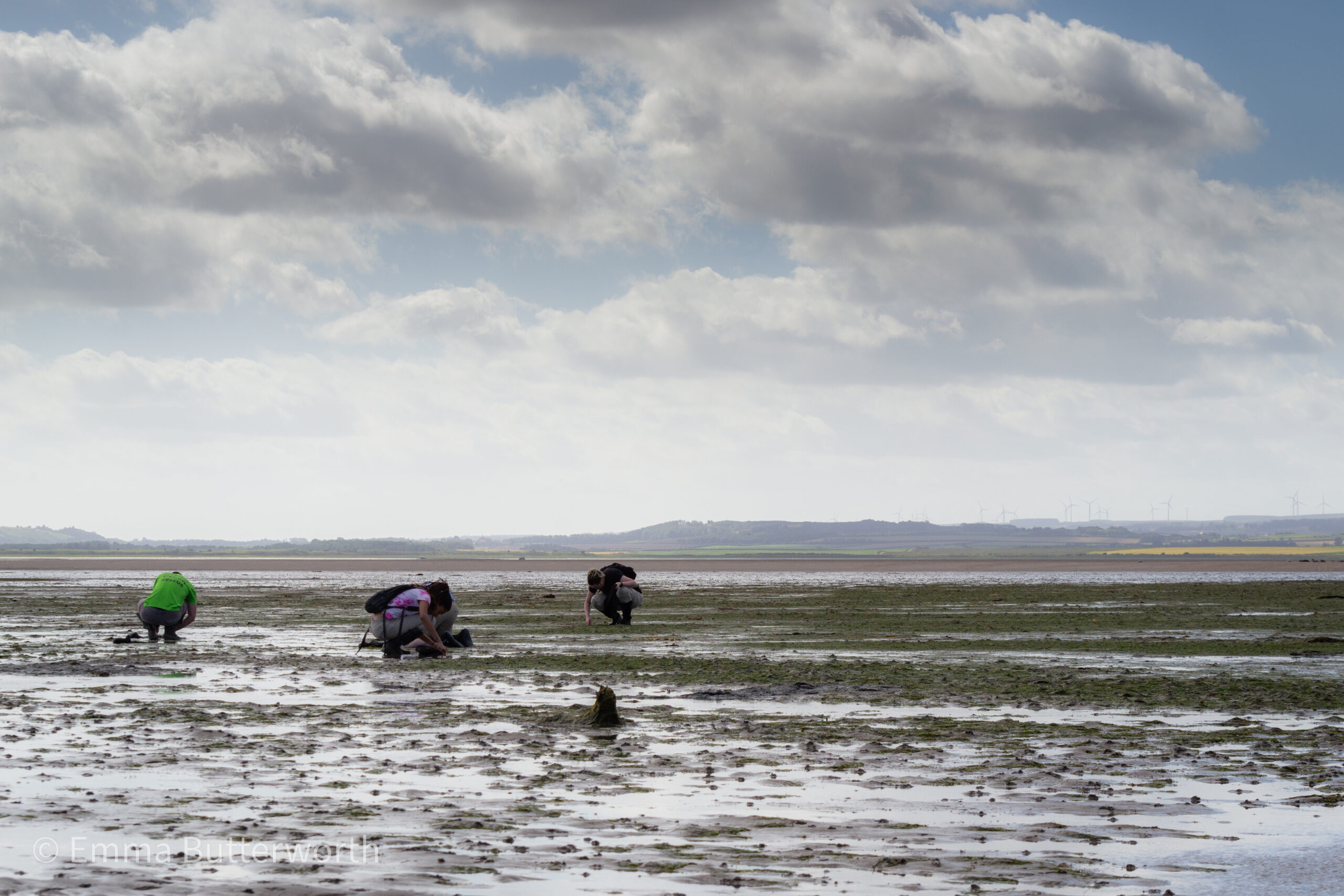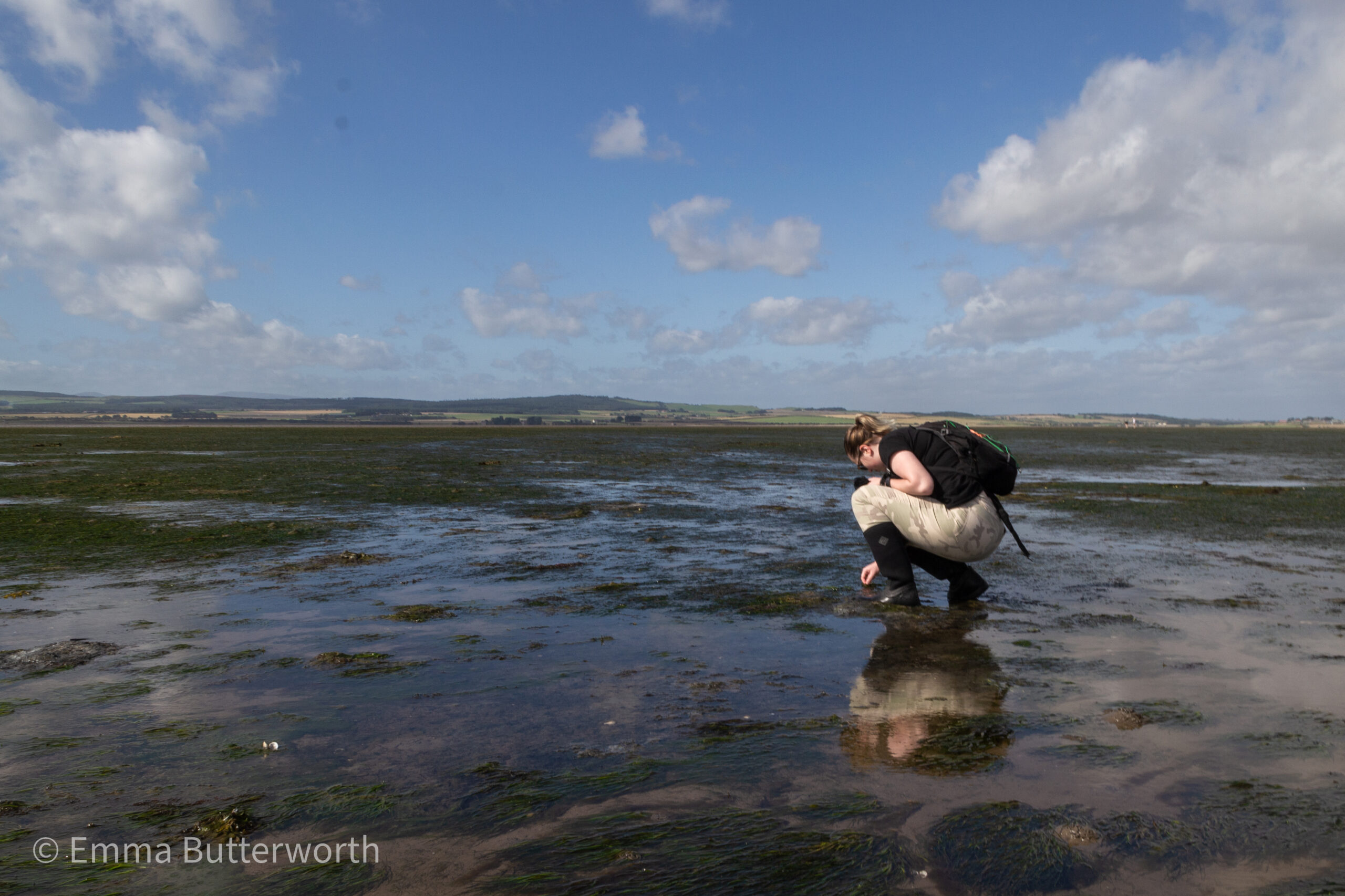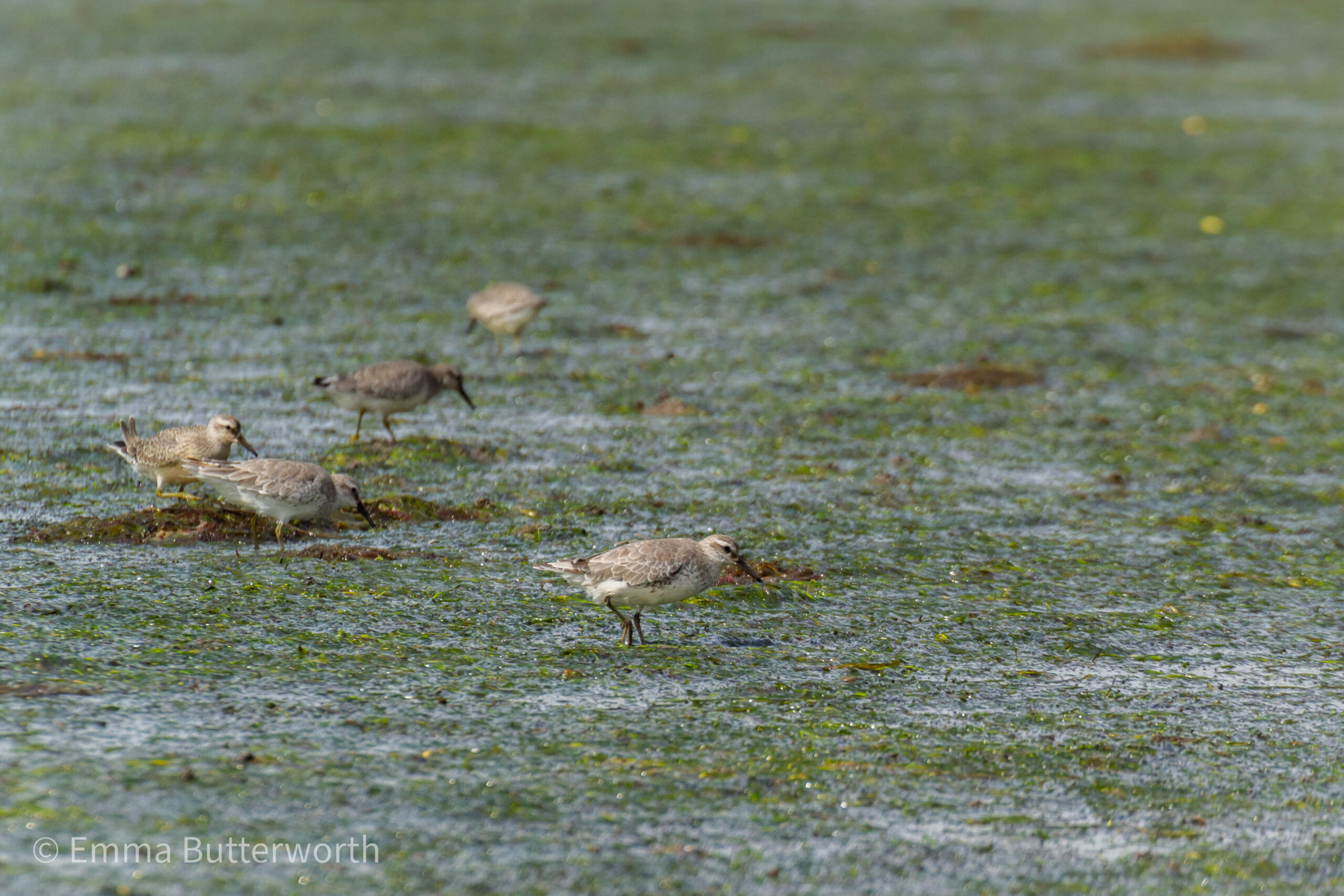Holy Island. A place with a rich history of monks, Vikings and saints. Nowadays Holy Island, also known as Lindisfarne, is a hotspot for tourists wishing to learn about British heritage or walk along the beautiful coastline. I only learnt just a few days prior to travelling up to Lindisfarne National Nature Reserve (Lindisfarne NNR) that as well as history, the mudflats there are also home to seagrass meadows! This was the reason for my journey from Swansea to the Northumberland, to help collect and transport seagrass seeds from the meadow at Lindisfarne back to Swansea. Our weekend team was led by RJ, with me and three volunteers joining to lend a hand which was only made possible through support from BIAZA.

Before we organised the trip, we needed consent from Natural England to collect the seeds. The Lindisfarne NNR is a site of Special Scientific Interest (SSSI) and so permissions are always sought when working in these environments (to ensure the best management of these places). However, since we are working in partnership with Lindisfarne NNR on this project, obtaining the consents for this work was straightforward.
Thursday came about and we met at the Island late morning. Our timings were completely reliant on the tides as the only way to access the island and mudflats is to go when the tide is low. This gave us a window of a few hours to get our work done out on the meadow. The first task of the weekend was to collect 600 spathes (the parts of the seagrass that contain the seeds). The hours spent kneeling to pick those spathes were very peaceful. The only sounds were the wind whistling and the eerie wail of what must have been hundreds of seals hauled out on the sand across the flats. The strong gusts carried the sounds making it almost haunting.

Similar to the day before, Friday involved more seed collection but this time we needed to do some more data collection. Quadrats were used to assess the condition of the meadow. This is important as this is the first time we have been able to collect seeds from this area. As well as collecting data, spending time on the meadow was a good opportunity for taking photos. There were dozens of wading birds, from curlews to dunlins, all using the seagrass meadow as a feeding ground. It was great to see so many species all gathered in one place!!

After a final day of seed picking and some video shooting for social media, RJ showed me some of the coastal towns in the area. It was my first time in Northumberland and South East Scotland, so it was great to the see the beautiful towns like Dunbar and North Berwick. These are the communities which we will be working with if Project Seagrass can expand its restoration sites to Scotland, so it was wonderful to see them first hand.
Overall is was a very successful weekend as we collected our goal of 600 spathes, the data needed, and footage. I also completed my personal goals of seeing interesting birds, doing photography, and learning about this incredible area of Britain!

